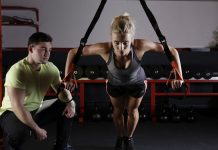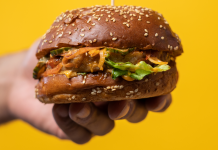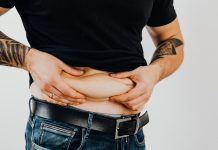Sawyer Wise
@georgelegal9
Profile
Registered: 3 years, 4 months ago
The Breathing: Tracing the Vital Your life Sustaining Method THE RESPIRATORY SYSTEM The consumption of oxygen and removal of co2 are the main functions on the respiratory system. The respiratory system does these life-sustaining acts during close coordination with the circulatory system. More often than not, we keep on being blissfully unacquainted with these automated functions. The respiratory areas deliver much needed oxygen to the circulatory system. The circulatory system transports the oxygen to everyone body cells. Oxygen is used by just cells to liberate the power needed for cellphone activities. The respiratory system as well removes co2. Thus, the circulatory program prevents the buildup of this lethal waste byproduct by the body processes tissues. Irreparable damage to flesh can occur if the respiratory system can be halted possibly for a few short minutes. This can cause failure of all other physique systems. The consequence is usually death! SINUSES COMMENCES THE RESPIRATORY PROCESS The breathing begins from your nose. It almost always ends in the lung area. The breathing is openheartedly divided into two parts, viz., the upper plus the lower respiration tracts. The top respirator region is made up of the nose as well as throat (pharynx). The lower respiratory tract includes five organs. These are the voice container (larynx), and the windpipe (trachea), bronchi, bronchioles and the lungs. The trachea splits in the two branches called bronchi. The bronchi further gets divided into further smaller twigs called bronchioles. The bronchi are a couple of spongy saclike organs. The bronchioles, bronchi, trachea, larynx, pharynx and the nose transport air to and from the bronchi. It is the voice that interact with the circulatory system designed for delivering fresh air and taking out carbon dioxide through the lungs. THE RESPIRATION COURSE OF ACTION Respiration is actually a two-pronged course of action. It entails the breathing and the circulatory systems. Breathing connotes the coordinated performing whereby the cells will be delivered much needed oxygen and the terminal carbon dioxide is removed. The first level: The nasal begins the first phase of breathing. This is done with inhaling or perhaps inhalation (breathing in). The method brings in air along with oxygen out of outside the body into the bronchi. From the voice, oxygen moves via the arteries and to the cardiovascular system. The soul pumps the oxygen-rich blood to all parts of the body. The first of all phase of respiration ceases with the fresh air moving into the cells through the bloodstream. The second phase: The second phase begins after the fresh air gets into the cells. The cells utilize the oxygen to produce energy. The following independent approach is called mobile phone respiration. This produces the byproduct -- carbon dioxide. The accumulated co2 now moves from the cellular material to the body. Next, the bloodstream transports the carbon dioxide to the cardiovascular system. Then, the carbon dioxide-laden blood is pumped back in the lungs. The third level: Again the nose comes into picture throughout this stage. The lungs drive the byproduct to the nasal from wherever it is exhaled or breathed out. This can be the final as well as third stage when the body gets rid of the carbon dioxide. At the conclusion of the other stage as well as entire breathing cycle another starts immediately. OTHER FUNCTIONS OF THE BREATHING The respiratory system further adjusts the balance from acid and base on tissues. That balancing function is crucial designed for the normal performing of skin cells. It shields the body from disease-causing microorganisms and dangerous substances inhaled with surroundings. The breathing also contains the solar cells that detect smell. In addition, the breathing assists in the production of sounds pertaining to speech. THE OLFACTORY NERVE The brown olfactory nerve is also termed olfactory receptors. The olfactory nerve inside nose is an essential nerve of smell. The olfactory region is made up of wide nasal delicate mucous membrane layer. Its brown color is due to a pigment. The olfactory nerve leads to minute varicose fibers (several small branches). These components ultimately deduce in the epithelial cells. Mentionably, the epithelial cells task into the nose free exterior. The olfactory nerve is definitely the first to find out of any sort of chemicals that may enter the sinus passages. The receptors right away trigger away a signal towards the brain. This creates the smell conception. THE OESOPHAGUS Esophagus is known as a muscular tube. The esophagus carries foodstuff from the can range f to the abdomen. The esophagus and the pharynx situated behind the mouth swallow the food and move it to the abdominal. The digestive system temporarily shops the food, blends it with digestive fruit drinks, and conducts some digestive function. The oesophagus also maintains the belly contents constantly in place. Actually, the following function is usually carried out by the bottom esophageal sphincter. This sphincter is a strength. It is placed at the lower end of the esophagus. THE PHARYNX The pharynx is mostly a passageway intended for both weather and food. The jugulaire connects the nose and mouth while using windpipe (trachea) and the food pipe (esophagus). The pharynx is a muscle tube. The pharynx is found within the guitar neck. The goitre is padded with a mucous membrane. The pharynx is approximately five inches wide (13 cm) in length. The pharynx lies in the front of the spine. The upper percentage of the goitre is known as nasopharynx. The identity arises mainly because it begins in the rear of the nose cavity.. The bottom is oropharynx. Open and Closed Circulatory System points to that spot in the back of the mouth. The défilé ends for the epiglottis. Epiglottis is a argument of cartilage. Epiglottis avoids food via entering the trachea. Nevertheless , the epiglottis allows the food item to enter the esophagus. Two eustachian tubes connect the pharynx towards the middle button. These eustachian equalizes the eardrums oxygen pressure. The pharynx can be infected via the mouth and also the nose. Sore throat involves défilé infection (pharyngitis) or esophagus inflammation. Pharyngitis can be caused by infectious mononucleosis, herpes, and viral bacterial infection. The viral infections happen to be German measles (rubella), azione, and prevalent cold. It can also be caused by bacterium like staphylococcal, streptococcal, chlamydial, and diphtherial. These bacteria multiply cause sore throat by just multiplying rapidly within the pharynx. Tonsils and Adenoids One of several adults the pharynx contains the tonsils, even though among the kids the pharynx contains the adenoids. Tonsils: Tonsils are lymphoid tissues behind the neck. Tonsils style a cells ring around the pharynx the actual throat. Tonsils are skin cells. Tonsils act like the blood lymphocytes. Tonsils are inserted in fibrous connective tissue. Tonsils will be covered by just one epithelium coating. The lymphoid cells are phagocytic. The cells shield the pharynx from bacterium that can bring about diseases. Tonsils may become irritated and chronically or highly infected. This problem is called tonsillitis. It is generally caused by streptococcus infection. During tonsillitis and streptococcal, the tissues encircling the tonsils form marcia. Then a white coat varieties over the tonsils which can turn up as vivid white specks. The following state is termed quinsy. If your pharyngeal tonsils become inflamed they become unusually large. There're called adenoids. Acute instances of tonsillitis are often viewed by medication like penicillin. Chronic recurrent tonsillitis might be treated by just tonsillectomy (surgical removal of the tonsils). Adenoids: Adenoids will be lymphoid cells at the back of the throat. Adenoids usually reduce in size and vanish by teenage life. Enlargement for this tissue is common among children. Such a condition can hinder breathing. The signs of enlarged adenoids include restless sleep, snoring, breathing by using mouth, and a nasal voice. Earlier, these tissues were taken out in kids. It was thought that inflamed adenoids led to persistent colds and infections. Today, this condition is recognized as benign. Therefore, there are smaller adenoidectomies. THE LARYNX On the pharynx, the inhaled air moves to the larynx. The larynx is around five ins (13 cm) in length. The larynx is located in the central part of the neck of. The larynx is made up of a couple of layers in flexible although tough the cartilage, a tissues. Mentionably, during puberty the males experience a protrusion of the the fibrous connective tissue cartilage. This enlarged prominent off shoot at the neck of the guitar is called the Adam's apple. FUNCTIONS OF THIS LARYNX The larynx largely transports air to the wind flow pipe (trachea). Besides, the larynx also helps in producing the sounds. The epiglottis -- a leaflike thin structure portion of the larynx -- further stops the food right from entering the trachea (thus obviating the opportunity of choking). In addition, the cilia cells plus the mucous membrane layer of the larynx also filter air. The cilia cells take the air-borne substances towards the pharynx where they are swallowed. The epiglottis: The epiglottis stem is certainly attached to the superior and the front portions with the larynx. In the event the epiglottis continues in a vertical position, it can work like a capture door. This happens while in the breathing practice. But as a person starts taking, a reflexive action allows the epiglottis and the larynx to move close to each other toward each other. This coming closer on the epiglottis as well as the larynx forms a protecting seal. Therefore, the essential fluids and meals are specially sent for the food tube (esophagus). As soon as the reflexive action doesn't work: What happens when the reflexive action will not function is the food can enter the larynx. This happens when one eats the mealtime fats or maybe when an individual laughs even though swallowing. By doing this that you will have a continuing cough impelled choking effect. At times the following apparently straight forward choking influence can even be life-threatening. The coughing is the system's reflexive action to clear the larynx of the impediment. Whenever such choking takes place, someone must thump the back portion between the shoulder blades several times. This will aid the person to get over the choking impact. The Heimlich maneuver: The Heimlich move around clears the windpipe of obstructions just like food or maybe fluid. The first-aid rendering person implements thrusts through quick and upward motion at the patient's abdomen. The aim is to get rid of the object stuck at the trachea (windpipe). Located behind the victim, the person keeps equally his biceps across the patient's waist. In that case, he positions the fist of one hand below the rib cage and a bit over a navel. All the while, he retains the thumb against the person's body. He uses the other hand pertaining to holding the fist as well as for applying force. Next, this individual puts speedy pressure within the abdomen. The pressure can be put in an inward and an upwards motion. That fast repeated action pushes the chest air to remove the element blocking the windpipe. However , in cases where the affected person cannot rest still, is definitely overweight, faints following the choking effect, the Heimlich walk is done within a different fashion. The patient was designed to lie face down. The first-aid provider carries on the approach with the back heel of a hands. Important: Nonetheless, it is important that individual does not set undue pressure on the rib cage. This is also true when the sufferer is a children or a great elderly someone. Too much force can break ribs. Designed for pregnant woman or fat people, the first-aid provider must place his biceps only on the bottom half of the breastbone (sternum) although carrying out the maneuver. In acute choking, tracheotomy (a surgical procedure) is attempted to carry out bypass of the larynx. This procedure brings in weather to the trachea. TRACHEA, BRONCHI, AND BRONCHIOLES The trachea is another tube measuring about six ins (15 cm). The trachea is located under the larynx. From larynx mid-air passes onto the trachea. About 20 strong C-shaped the cartilage rings make up the trachea. These jewelry help to keep the trachea open up. In the process, atmosphere gets shipped unhindered. Even though the unfastened the fibrous connective tissue cartilage is located on the trachea's again portion, their particular ends happen to be linked to each other by muscle tissues. Bronchi + bronchioles: The trachea basic is situated with the portion in which the neck complies with the body trunk. At this point, the trachea splits into the right plus the left bronchi. These bronchi transport weather to the all over the place lungs respectively. Inside the bronchi, these bronchi again split up into smaller tubes -- the bronchioles. In fact , the respiratory system's cleansing approach is carried out by those bronchioles that are positioned at the first part, bronchi, and the trachea. These body parts carry out the cleansing process via the mucous membrane linings as well as the ciliated cells. These cilia as well as lining drive the nasal mucus upward towards the pharynx. Alveoli & capillary vessels: Alveoli happen to be minute cartable inside the voice. Most of the alveoli are chest tissues. Alveoli are made by the bronchioles as they split several times. The alveoli combined with the bronchioles mimic a sapling. The alveoli are only 0. 02 in . (0. 5 mm) on diameter. There is about 150 million alveoli in every lung. The alveoli conduct a dual function. While providing o2 to the circulatory system, they also remove co2 from the voice. The tiny elastic alveoli walls extend when air moves inside them. Them collapse to exhale the environment. The alveoli remain in groupings like the fruit. Each chaos is between capillaries. The capillaries happen to be thin-walled and form some dense net of teeny hairs. The alveoli divider air is generally located 0. 2 microns away from the blood carried by capillary. Mentionably, the alveoli have more fresh air concentration then capillaries. So , oxygen disseminates to capillaries from alveoli. Through the capillary vessels, oxygen goes to the larger ships. These ships then carry the oxygenated blood towards the heart. Subsequent, the center pumps the cleaned blood to the other parts of the physique. Macrophages: Among the alveoli happen to be interspersed various macrophages. The macrophages will be blood cellular material. These large white solar cells act as the final sentinels on the respiratory system among the list of alveoli. The macrophages segregate the foreign factors which may include passed through the sooner filtration approach. This previous line of defense ensures that the alveoli aren't infected. Carbon dioxide disposal: The cells from across the overall body dump Carbon as a throw away product. It will be dumped from the bloodstream. Blood carries Co2 into the center. From the cardiovascular, the Carbon moves to the alveolar capillary vessels. Notably, the capillaries convey more concentration in carbon dioxide than the alveoli. So , carbon dioxide gets diffused in the alveoli through the capillaries. If a person exhales, the Carbon dioxide is forced back with the respiratory channels. The gas is then tossed outside the human body.
Website: https://iteducationlearning.com/open-and-closed-circulatory-system-all-you-will-need-to-know/
Forums
Topics Started: 0
Replies Created: 0
Forum Role: Participant

















